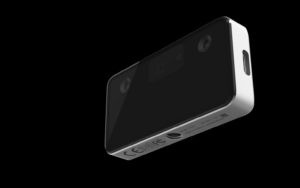Intel recently unveiled its latest facial recognition technology that promises to be compatible with different smart devices and not limited to one, rivaling Apple's Face ID that uses the same facial recognition system. Smart devices are getting more advanced, and security should not be a compromise amongst these, and Intel wants to step up and fill the gap.

The famous computer chipmaker and technology giant, Intel, has asserted its name and identity as an innovative company that centers itself on next-generation technology for various uses, not limited to computers. Intel's recent tech centers on security and facial recognition, which uses artificial intelligence, known as another significant company's product.
Lately, Intel was getting disregarded in PC laptop technology, with Apple's switch to the ARM-based silicon system-on-chip (SoC) M1 that trashed past Intel-equipped MacBook Pros in benchmarks and performance tests. Microsoft was the next to forego Intel with its ARM-based processor chip that would also combine almost all computer operations in one.
Intel's RealSense ID: Smart Device Integration with Facial Recognition Security and AI

Intel just released its RealSense ID from its newsroom and press release, narrating the technology's features and capabilities that centers on security. The company said that privacy is the device's top priority, securing user's files and data with its next-generation lock for different smart devices.
The RealSense ID is more than a security device, but an "on-device solution" that would seamlessly work with smart gadgets in implementing a privacy and safety feature that can only be unlocked via Facial Recognition. Intel's RealSense ID can be used for smart locks for home and commercial use, point-of-sale, access control, ATMs, kiosks, etc.
The device can be installed quickly, without using complex processes or even network setups linked with different electronic devices that it can take over. The device features a "depth sensor," cameras, and artificial intelligence that can accurately distinguish facial features for authentication or entry in the system.
Intel vs. Apple: RealSense ID resembles the Face ID

According to 9 to 5 Mac, Intel's RealSense ID is a direct competition to Apple's Face ID, as both presents similar features and functions regarding the security specifications it uses. Both devices are somehow identical from the depth sensor to artificial intelligence as the same authentication process is used.
The difference between both is that Apple's Face ID centers itself on iPhone and iPad technology, mostly on handheld devices, which users mostly use for private functions. On the other hand, Intel's RealSense ID does not limit itself to one device or technology, giving users a chance to apply facial recognition and privacy features on non-camera equipped gadgets.
Intel's RealSense ID presents a universal application for facial recognition that does not limit itself to its devices or technology's exclusivity, unlike Apple's Face ID. Users need only to glance at the RealSense ID device to unlock or allow access, having an SoC chip that manages its security features and stores the various authenticated identities on the Intel device.
This article is owned by Tech Times
Written by Isaiah Alonzo
ⓒ 2025 TECHTIMES.com All rights reserved. Do not reproduce without permission.




